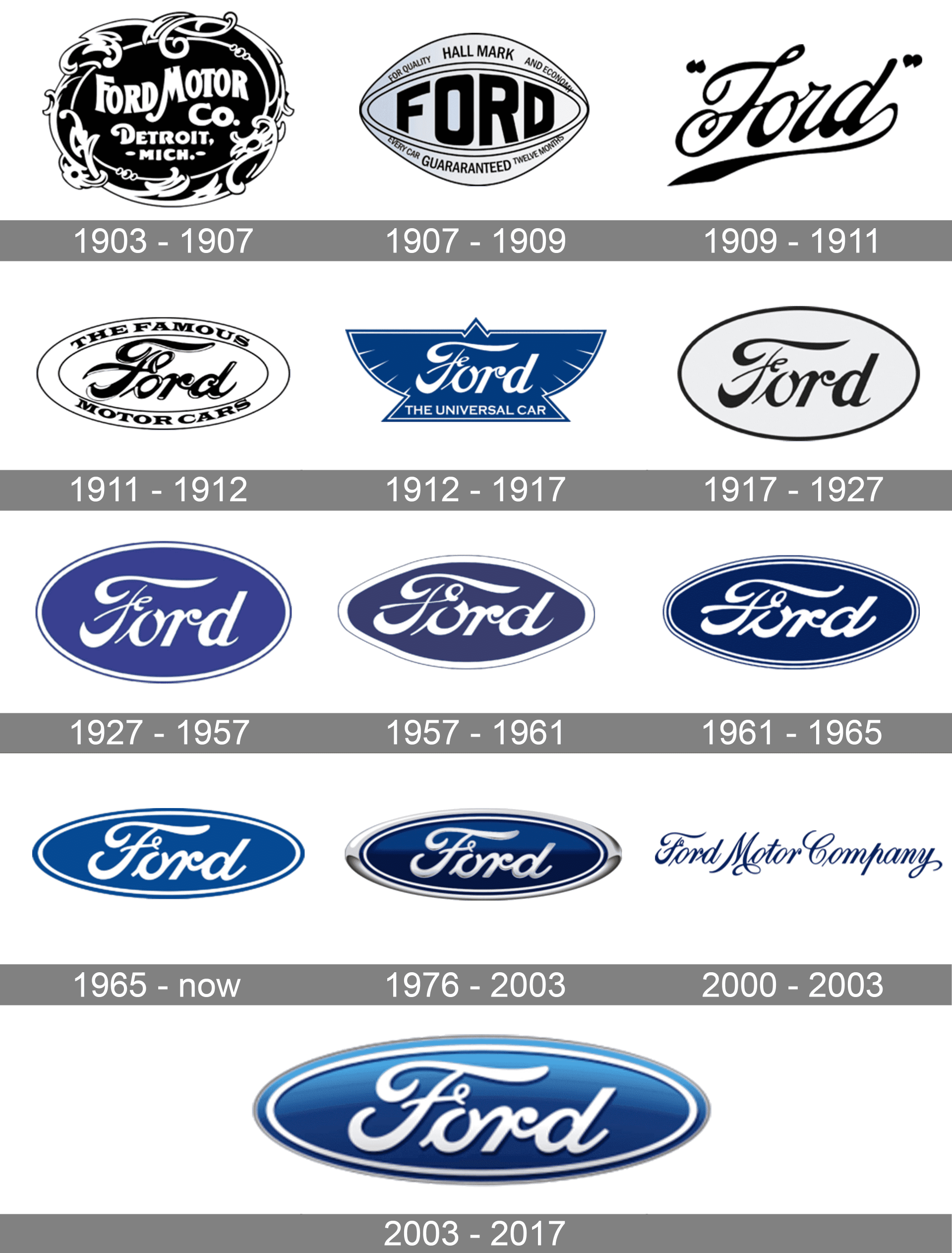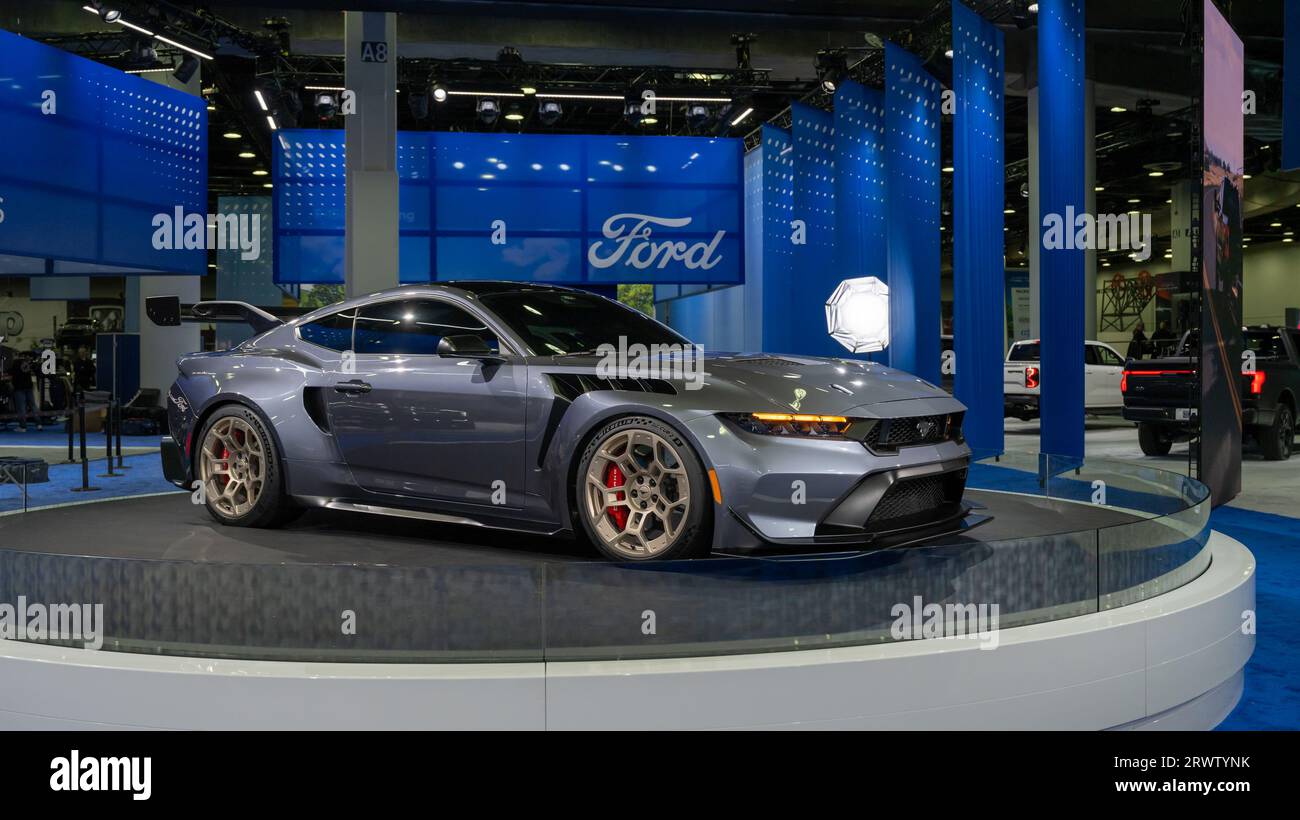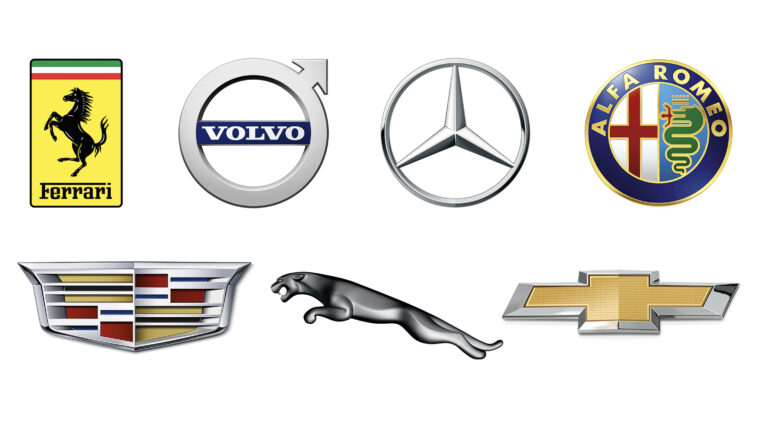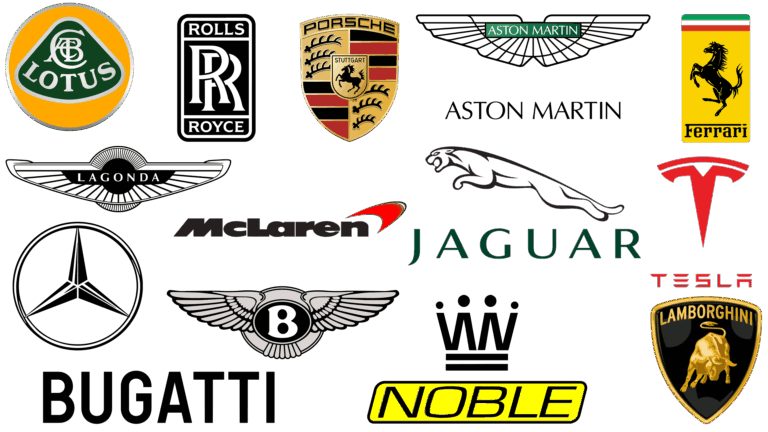Detroit’s Enduring Legacy: The Ford Motor Company – The Car Brand Started by Ford
Detroit’s Enduring Legacy: The Ford Motor Company – The Car Brand Started by Ford cars.truckstrend.com
Detroit. The very name evokes images of roaring engines, assembly lines humming with activity, and the relentless pursuit of progress. At the heart of this automotive revolution, a single name stands paramount: Ford. While many brands have come and gone, the Ford Motor Company is the quintessential "Detroit Car Brand Started By Ford" – founded by the visionary Henry Ford himself. More than just a manufacturer, Ford became the engine of American industry, democratizing personal transportation and forever altering the socio-economic landscape of the 20th century and beyond. This article delves deep into the origins, innovations, impact, and enduring legacy of this automotive giant, exploring its journey from a humble workshop to a global powerhouse.
The Genesis of an Icon: Henry Ford and the Birth of the Ford Motor Company
Detroit’s Enduring Legacy: The Ford Motor Company – The Car Brand Started by Ford
The story of the Detroit car brand started by Ford begins not with a sprawling factory, but with the tenacious spirit of one man: Henry Ford. Born in 1863, Ford was a self-taught engineer and tinkerer with an unwavering belief in the potential of the automobile. His early ventures, the Detroit Automobile Company (1899) and the Henry Ford Company (1901), were short-lived, largely due to disagreements with investors who prioritized luxury vehicles over his vision of an affordable car for the masses.
Undeterred, Ford, along with a group of investors, founded the Ford Motor Company on June 16, 1903, in a converted wagon factory on Mack Avenue in Detroit. With just $28,000 in capital, the company’s initial output was modest, producing a few cars a day with a handful of employees. Their first successful model was the Ford Model A, a two-cylinder vehicle that helped secure the company’s financial footing.
However, it was the introduction of the Model T in 1908 that truly revolutionized the industry and cemented Ford’s place in history. Designed to be simple, robust, and repairable, the Model T was initially priced at $850. Ford’s genius lay not just in the product, but in his revolutionary approach to its production. He envisioned a car that every working American could afford, and to achieve this, he needed to drastically reduce manufacturing costs.
This ambition led to the implementation of the moving assembly line in 1913 at Ford’s Highland Park Plant. This innovation, inspired by techniques used in meatpacking plants, slashed the time it took to build a car from over 12 hours to just 93 minutes. The moving assembly line was not just an efficiency gain; it was a paradigm shift that redefined industrial production, making mass manufacturing feasible and affordable.
Pioneering Innovation and Unprecedented Impact
The Ford Motor Company’s impact extended far beyond simply building cars. Its innovations laid the groundwork for modern industrial society:
- Mass Production and Affordability: The assembly line, combined with interchangeable parts, allowed Ford to dramatically lower the price of the Model T. By 1914, the price had dropped to $440, and by 1925, it was just $260. This made the automobile accessible to millions, transforming it from a luxury item for the wealthy into a practical tool for the common person.
- The "$5 Day": In 1914, Henry Ford controversially, but shrewdly, announced a new wage of $5 per day for his factory workers – more than double the going rate. While seemingly altruistic, this move was a strategic masterstroke. It reduced employee turnover, attracted the best workers, and, crucially, created a large pool of consumers who could now afford to buy the very cars they were building. This concept of paying workers enough to afford the products they produced became a cornerstone of modern industrial economics.
- Democratization of the Automobile: The affordability of the Model T spurred the development of infrastructure – roads, gas stations, repair shops – across the nation. It gave individuals unprecedented freedom and mobility, fostering suburban growth, facilitating commutes, and connecting rural communities.
- Global Expansion: Ford was one of the earliest companies to embrace global manufacturing and sales. By the 1920s, it had assembly plants on six continents, establishing a truly international footprint and spreading its production methods worldwide.

These innovations made the Ford Motor Company not just a car brand, but a symbol of American ingenuity, efficiency, and economic opportunity.

Expanding the Empire: Ford’s Divisional Brands (Lincoln, Mercury, Edsel)
While the Ford brand itself remained the cornerstone, the Ford Motor Company also expanded its portfolio by acquiring or creating additional brands to target different market segments. This diversification strategy aimed to capture a broader range of consumers, from luxury buyers to those seeking a step up from the base Ford models.
- Lincoln (Acquisition, 1922): In 1922, Ford acquired the struggling Lincoln Motor Company from Henry M. Leland, who had founded it in 1917 to build Liberty aircraft engines during WWI and later luxury automobiles. Henry Ford’s son, Edsel Ford, took a keen interest in Lincoln, transforming it into Ford’s premium luxury division. Under Edsel’s guidance, Lincoln cars became known for their elegant design and sophisticated engineering, competing directly with Cadillac and Packard. Lincoln remains Ford’s luxury arm today, synonymous with comfort, style, and advanced features.
- Mercury (Created, 1938): Conceived by Edsel Ford, the Mercury brand was launched in 1938 to fill the pricing gap between the affordable Ford cars and the high-end Lincoln models. Mercury was positioned as a "mid-market" brand, offering more upscale styling, features, and performance than a standard Ford, but at a more accessible price point than a Lincoln. For decades, Mercury models shared platforms and components with Ford vehicles, offering a slightly more refined or sporty alternative. However, due to declining sales and a lack of distinct identity, Ford ultimately discontinued the Mercury brand in 2011.
- Edsel (Created, 1957; Discontinued, 1959): The Edsel stands as one of the most infamous marketing failures in automotive history. Launched in 1957, the brand was named after Henry Ford’s son, Edsel Ford, and was intended to be a completely new mid-range division, positioned above Mercury. Ford invested enormous resources into its development and marketing, aiming to capture the burgeoning post-war middle class with a car that was distinctively styled and technologically advanced.
- Challenges and Lessons Learned: Despite the hype, the Edsel was plagued by a combination of factors: an economic recession, controversial styling (particularly its prominent "horse collar" grille), quality control issues in early production, and a public perception that it was overpriced and didn’t offer enough differentiation from existing Ford and Mercury models. The brand became a symbol of corporate hubris and misjudgment. Ford pulled the plug on Edsel in late 1959, after just two model years and significant financial losses. The Edsel debacle provided invaluable lessons in market research, product differentiation, and the dangers of over-hyping a product.

These ventures demonstrate Ford’s strategic attempts to segment the market and cater to diverse consumer needs, highlighting both successes and the occasional, painful failure.
The Heart of Detroit: Ford’s Enduring Presence
The Ford Motor Company isn’t just a global enterprise; it’s an inextricable part of Detroit’s identity. From its earliest days, Ford’s operations were deeply rooted in the city and its surrounding suburbs.
- The Rouge Complex: Built in Dearborn, Michigan (just outside Detroit), beginning in 1917, the Ford River Rouge Complex was Henry Ford’s ultimate vision of industrial integration. At its peak, it was the largest single industrial complex in the world, encompassing everything from steel mills and glass plants to assembly lines, all designed to transform raw materials into finished vehicles within a single, massive facility. The Rouge became a symbol of American industrial might and efficiency, employing over 100,000 workers at its peak.
- Contribution to Detroit’s Identity and Economy: Ford’s immense employment base and its ancillary industries (parts suppliers, tool and die makers) formed the bedrock of Detroit’s economy for decades. The company’s presence fostered a vibrant working-class culture and attracted waves of migration to the city, contributing to its diverse population and unique character.
- Challenges and Revitalization: As Detroit faced economic downturns, deindustrialization, and the auto industry’s struggles in the late 20th and early 21st centuries, Ford, like its counterparts, faced immense challenges. However, Ford has remained committed to its Detroit-area roots. Recent investments, such as the redevelopment of the historic Michigan Central Station in Corktown into a mobility innovation campus, underscore Ford’s ongoing commitment to the city’s revitalization and its role in shaping the future of transportation.
Practical Advice and Actionable Insights from Ford’s Legacy
The history of the Detroit car brand started by Ford offers profound lessons applicable far beyond the automotive industry:
- Embrace Disruptive Innovation: Henry Ford didn’t just improve existing cars; he fundamentally changed how they were made and distributed. Businesses must constantly seek out and embrace disruptive technologies and processes to stay relevant.
- Focus on Affordability and Accessibility: Making quality products accessible to a wider audience can unlock massive markets. Ford’s success with the Model T proved the power of mass appeal over niche luxury.
- Invest in Your Workforce: The $5 Day demonstrated that investing in employees (through fair wages, good working conditions) can lead to increased productivity, loyalty, and even create a customer base.
- Learn from Failures: The Edsel was a colossal failure, but Ford learned valuable lessons about market research, design, and product differentiation. Failure is an inevitable part of innovation; the key is to analyze, learn, and adapt.
- Long-Term Vision and Adaptability: Ford has survived over a century by adapting to changing consumer tastes, economic conditions, and technological advancements (from internal combustion to electrification). A long-term vision coupled with agile adaptation is crucial for enduring success.
The Modern Ford: Navigating the Future
Today, the Ford Motor Company continues to be a dominant force in the global automotive landscape. While the assembly line remains a core principle, the focus has shifted dramatically.
- Shift to SUVs and Trucks: In the North American market, Ford has strategically moved away from sedans, focusing its efforts on highly profitable trucks (like the ubiquitous F-Series, America’s best-selling vehicle for decades) and SUVs (Explorer, Escape, Bronco).
- Electrification: Ford is making massive investments in electric vehicles (EVs). The Mustang Mach-E, the F-150 Lightning electric pickup, and the E-Transit van are spearheading its push into the EV market, aiming to electrify its most iconic nameplates.
- Autonomous Technology and Mobility: Ford is actively developing autonomous driving technology and exploring new mobility solutions, including ride-sharing and connectivity services, positioning itself for a future where car ownership might evolve.
- Global Competitive Landscape: Ford faces intense competition from established rivals, emerging EV startups, and tech giants. Its ability to innovate rapidly, manage global supply chains, and appeal to diverse markets will determine its continued success.
The Detroit car brand started by Ford is not content to rest on its laurels; it is actively shaping the next century of mobility.
Iconic Ford Vehicles and Their Initial Market Price
The affordability of Ford vehicles was a cornerstone of its early success, making personal transportation a reality for millions. Here’s a look at the initial prices of some of Ford’s most iconic models:
| Vehicle Model | Year of Introduction | Initial Price (USD) | Significance |
|---|---|---|---|
| Ford Model A | 1903 | $850 | Ford’s first successful car, helping establish the company. |
| Ford Model T | 1908 | $850 | The "car for the great multitude." Price eventually dropped to $260 by 1925, making it widely affordable due to mass production. |
| Ford Model A (2nd Gen) | 1927 | $385 – $1,400 | Successor to the Model T, offering more style and features. Its varied body styles reflected increasing consumer choice. |
| Ford F-1 (F-Series) | 1948 | Approx. $1,300 | The inaugural model of the F-Series, which would become America’s best-selling vehicle for decades, defining the modern pickup truck. |
| Ford Thunderbird | 1955 | $2,695 | Ford’s answer to the Corvette, a two-seat personal luxury car that blended sportiness with comfort, creating a new market segment. |
| Ford Mustang | 1964 | $2,368 | Launched a new "pony car" segment, appealing to a younger demographic with its sporty design, customizable options, and affordability. An instant classic. |
| Ford Explorer | 1990 | Approx. $17,000 | Revolutionized the SUV market, transitioning the utility vehicle into a mainstream family car and becoming incredibly popular. |
| Ford F-150 Lightning (EV) | 2022 | Approx. $52,974 | Ford’s iconic F-150 reimagined as an all-electric vehicle, signaling a major shift in the company’s future and the broader truck market. (Pro trim, MSRP) |
Note: Prices are approximate initial MSRPs and varied by trim level and optional features.
Frequently Asked Questions (FAQ) about the Detroit Car Brand Started By Ford
Q1: What exactly is "the Detroit Car Brand Started By Ford"?
A1: This refers primarily to the Ford Motor Company, which was founded by Henry Ford in Detroit, Michigan, in 1903. While Ford also created or acquired other brands/divisions like Mercury and Lincoln, the Ford Motor Company itself is the direct "car brand started by Ford."
Q2: Was Ford the first car company in Detroit?
A2: No. While Henry Ford was instrumental, several other pioneering automotive companies existed in Detroit before Ford Motor Company. For example, Olds Motor Works (later Oldsmobile) was founded in Lansing, Michigan, and moved some operations to Detroit briefly before its main plant burned down. Cadillac and Packard were also founded in Detroit before Ford gained widespread dominance. However, Ford’s innovations in mass production truly put Detroit on the map as the "Motor City."
Q3: What other car brands did Ford create or acquire?
A3: Ford acquired Lincoln in 1922 to establish a luxury division. It created Mercury in 1938 as a mid-market brand between Ford and Lincoln. It also famously launched the Edsel brand in 1957, which was discontinued after only two years due to poor sales. Over the years, Ford has also owned brands like Aston Martin, Jaguar, Land Rover, and Volvo, though these have since been sold off.
Q4: Is Ford Motor Company still based in Detroit?
A4: Ford Motor Company’s global headquarters is located in Dearborn, Michigan, a suburb directly adjacent to Detroit. While its main manufacturing and administrative facilities are primarily in Dearborn and other surrounding areas, Ford has a significant and growing presence within Detroit city limits, including its major redevelopment project at Michigan Central Station.
Q5: What was the significance of Henry Ford’s "$5 Day"?
A5: In 1914, Henry Ford announced that he would pay his factory workers $5 per day, more than double the previous wage. This was revolutionary because it drastically reduced employee turnover, attracted the best workers, and, crucially, ensured that Ford’s own employees could afford to buy the cars they were building. It was a key factor in creating a mass consumer market for automobiles and influencing modern industrial labor practices.
Q6: What happened to the Mercury and Edsel brands?
A6: The Edsel brand was a commercial failure, launched in 1957 and discontinued in 1959 due to poor sales and public reception. The Mercury brand was discontinued in 2011 by Ford Motor Company. This decision was made as part of a broader restructuring, aimed at streamlining Ford’s brand portfolio and focusing resources on the core Ford and Lincoln brands. Mercury’s market share had steadily declined, and its products often lacked sufficient differentiation from their Ford counterparts.
Conclusion
The Ford Motor Company, the quintessential "Detroit Car Brand Started By Ford," stands as a monumental testament to innovation, industrial prowess, and the transformative power of a clear vision. From the revolutionary assembly line and the democratizing Model T to its strategic brand expansions and its current pivot towards electrification, Ford has consistently shaped the automotive landscape and, by extension, the world. Its deep roots in Detroit are not just historical; they continue to be a vibrant part of its ongoing narrative. As Ford navigates the complexities of the 21st century, its enduring legacy serves as a powerful reminder of how one brand, born in the heart of America’s Motor City, drove progress for generations.






